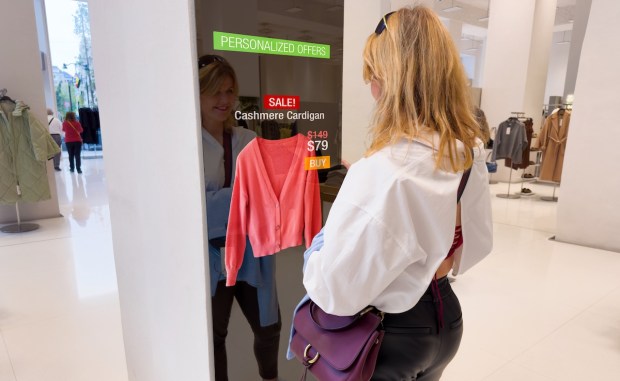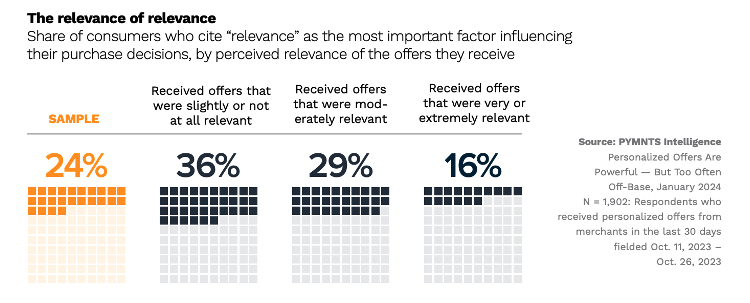The Right Personalized Offers Double the Chance to Attract New Customers

The trend of personalized offers and contextualized consumer experiences has emerged as a differentiating competitive factor across industries, from retail to media or travel experiences.
As seen in the restaurant sector in 2023, merchants are adapting the personalized offers they make to better meet evolving consumer expectations. However, despite their potential to foster customer loyalty, research shows that more than half of consumers find the offers they receive irrelevant to their needs and preferences. This missed opportunity is costing merchants more than they think because tailoring offers effectively to what consumers truly demand doubles the chance of consumers switching merchants. In other words, merchants could gain new customers just by providing the right personalized offers.
This is one of the findings in the PYMNTS Intelligence study “Personalized Offers Are Powerful — but Too Often Off-Base,” which examines U.S. consumers’ preferences regarding merchants’ personalized offers.
Merchants not only have misperceptions about what products or services customers want, they are also confused about the type of offers customers want, the study found. Only 44% of consumers find the offers they receive very relevant to their needs, indicating a crucial gap between what they demand and what they receive from merchants.
While almost half of consumers are interested in receiving personalized promotions and discounts, the most sought-after offer, only 5% demand exclusive access to new products, and just 4% product seek personalization bundles. Therefore, merchants need to know what consumers want in the first place to persuade them to change.

To meet the mark, merchants must adopt a customer-centric approach and implement data-driven strategies to accurately understand and address the specific needs and preferences of their target consumers.
Doug Brown, president of digital banking at NCR Voyix, told PYMNTS that hyper-personalization will become a requirement in the industry.
“It’s no longer enough to suggest similar products based on past purchases or broad demographics,” Brown said. “Hyper-personalization has to go beyond the obvious, tapping into a wider range of data points to create a truly individualized experience.”
While monetary offers remain the biggest purchase incentive for more than half of consumers, it is important to note that well-personalized, non-monetary offers can also build customer loyalty without relying solely on discounts.
Personalized offers are an engine to motivate consumers to change their shopping habits and try new merchants. This trend is widespread among millennials, with 41% indicating a willingness to switch for better personalization, closely followed by Generation Z and Generation X, both at 34%. This highlights the importance of considering different segments of the market when crafting personalized offers.
In 2023, a shift toward personalized experiences and tailored customer journeys became paramount for reshaping strategies, PYMNTS found. By addressing the challenges associated with consumer preferences, merchants can unlock new avenues for customer engagement, driving both sales and long-term loyalty.

